#Ernest Blyth
Photo
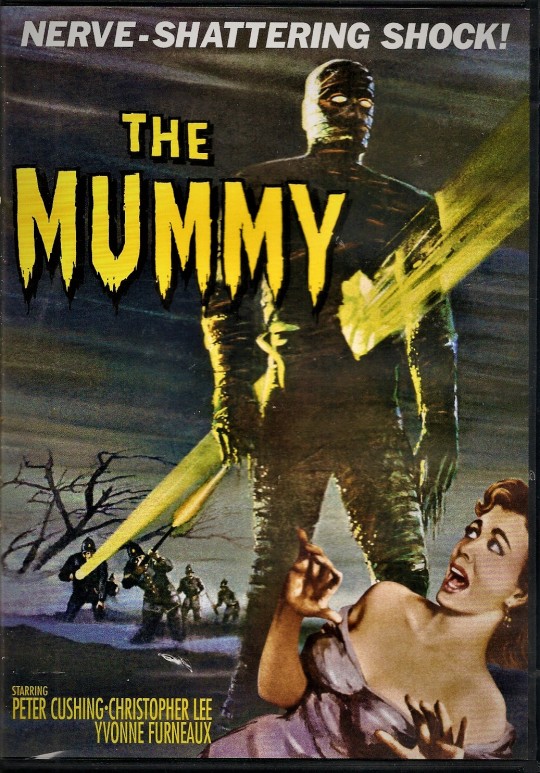
Bad movie I have The Mummy 1959
#The Mummy#Peter Cushing#Christopher Lee#Yvonne Furneaux#Eddie Byrne#Felix Aylmer#Raymond Huntley#George Pastell#Michael Ripper#George Woodbridge#Harold Goodwin#Denis Shaw#Gerald Lawson#Willoughby Gray#John Stuart#David Browning#Frank Sieman#Stanley Meadows#Frank Singuineau#Ernest Blyth#James Clarke#Arthur Dibbs#John Harrison#Frederick Rawlings#George Spence#Roy Stewart
2 notes
·
View notes
Text
tom blyth in uniform in tbosas. now he's gonna be a lead in a WWI movie...
21 notes
·
View notes
Note
did theta turn/got turned into a fey like blythe or was she like already born as a cool ass skull nature green hag already?
In true tragic fashion...she was turned just like her a long time ago. The nature of abuse is often cyclical, and I am drawing from experience of the older generation inflicting the same abuse they suffered onto the young generation due to the belief that it's the "right way."
At one point Theta also was a High Elf, who became a hexblood and later a green hag. It was many centuries ago, and she most likely does not even recall what her elven life was like. Perhaps it's the curse of her being a fae for so long, perhaps it's just how her mind learned to cope with it--- but she is of the opinion that the hag that turned her was correct. That she turned out to be an incredibly powerful witch, and now it's her turn to guide another woman, just like she was guided long ago. And in time, Blythe will understand it too. And when the time comes, she will guide someone else.
#ask#theta#blythe#i love their relationship so much - it feels very visceral to me and to draw from my personal experiences#i think that its incredibly tragic to have antagonists that don't...realize theyre antagonists#that their feelings and motivations are ernest
31 notes
·
View notes
Photo

Mildred Pierce (1945) directed by Michael Curtiz featuring Joan Crawford and Ann Blyth
#cinema#mildred pierce#michael curtiz#Budapest#Austria-Hungary#Hungary#joan crawford#san antonio#Texas#ann blyth#mount kisco#new york#cinematography#ernest haller#los angeles#california#james m cain#annapolis#maryland#USA
3 notes
·
View notes
Text
actors on actors | tom blyth


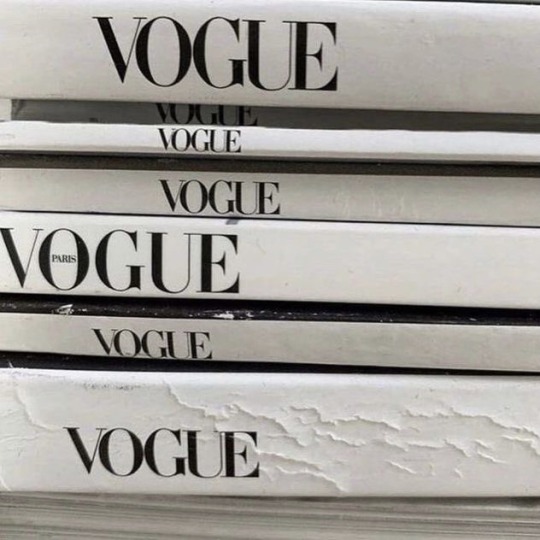
summary: tom and reader are paired for variety’s actors on actors.
an: full credit goes @prettylittlels for the idea!! thank you!!🫶🏼 you can choose what film you’re in and your character for this fic :)

“were you a hunger games fan growing up?” you asked tom. you and tom were paired together to be in a new edition of actors on actors for variety. you were seated across tom.
“i did read the books, watched the movies, but they were unavoidable. i remember going to midnight screenings of the movies with my mum.” tom nodded.
“i loved going to midnight screenings! we need to bring those back,” you replied. midnight screenings were your favorite when you were a teenager. you loved going with your best friends and sometimes your parents, but they always ended up sleeping halfway through the movie.
tom then asked about your character. “i definitely made multiple playlist for them. i just love making playlists. they for sure listen to some sad stuff like mitski. but i enjoyed everything about them.”
“i think snow would listen to money, power, glory by lana del rey. it’s going on his playlist while he’s getting his hair ready.” he laughed.
“oh my god, snow is a lana stan.”
after a while, you talked about your upcoming projects. tom’s new project was an adaptation of ernest hemminway’s novel alongside olivia cooke while you were finishing up filming the remake of nosferatu as ellen hutter.
“then i might take a break. i’ve been working nonstop for about three years and i’m forever grateful for all the opportunities. i just want to lay down for a bit.” you admitted with a laugh.
“i’ll join you.”
TWITTER
@/blythupdates “I’LL JOIN YOU” IM SCREAMINGGG
@/ynsocar pls they’re so cute together 😭
@/onedirectioncomeback no you don’t understand i need them in a movie together NOWWW
#tom blyth one shot#tom blyth fanfiction#tom blyth fluff#tom blyth fanfic#tom blyth imagine#tom blyth x reader#tom blyth#coriolanus snow#the ballad of songbirds and snakes#the hunger games the ballad of songbirds & snakes
738 notes
·
View notes
Text
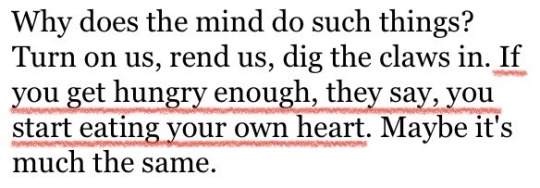














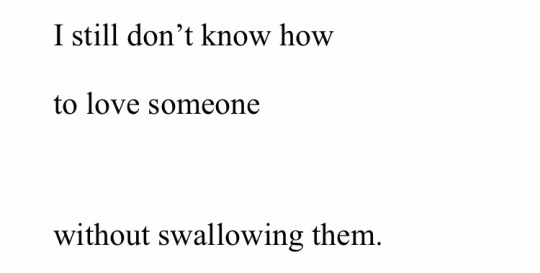


i love you like i love being hungry. it feels good to want things.
or: c!quackity, on starvation
the blind assassin, margaret atwood // nobody, mitski // abbey, mitski // stay soft, mitski // quackity’s tvtropes page // fish in exile, vi khi nao // moderation, florence + the machine // the complete short stories of ernest hemingway // unknown // unknown // i will tell this story to the sun until you remember that you are the sun, erin slaughter // crush, richard siken // children stories made horrific, daniel mallory ortberg // war of the foxes, richard siken // if my body could speak, blythe baird // euripides, medea // andy-deer // paper doll, flower face
#c!quackity#dream smp#dsmp web weaving#my web weaves#i’ve never made a short ww in my life truly….#anyway ik this is messier than my usual but i randomly got inspired last night and threw this together. hope u like#three m.itski lyrics back to back to back oh my god i need to be stopped#blood tw#cannibalism tw#hall of fame
417 notes
·
View notes
Text


“Rings" by Ernest Blyth in gold and diamonds (1972) presented in “A History of Jewellery: Bedazzled (part 8: Jewellery from 1950s, 60s and 70s)” by Beatriz Chadour-Sampson - International Jewellery Historian and Author - for the V&A Academy online, april 2024.
2 notes
·
View notes
Text
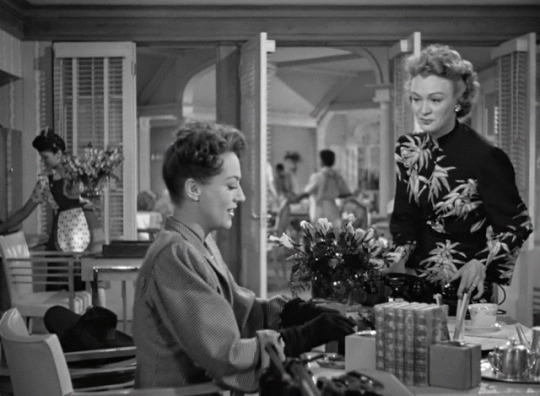
Joan Crawford and Eve Arden in Mildred Pierce (Michael Curtiz, 1945)
Cast: Joan Crawford, Jack Carson, Ann Blyth, Zachary Scott, Eve Arden, Bruce Bennett, Butterfly McQueen, Lee Patrick, Moroni Olsen, Jo Ann Olsen. Screenplay: Ranald McDougal, based on a novel by James M. Cain. Cinematography: Ernest Haller. Art direction: Anton Grot. Film editing: David Weisbart. Music: Max Steiner.
Mildred Pierce provided Joan Crawford with her shining Oscar moment, even if she had to accept her statuette from her sickbed -- surrounded, to be sure, by press photographers. But I don't think it's her best performance. I prefer her as Crystal Allen in The Women (George Cukor, 1939), who although she loses her sugar daddy still manages to kiss off the "respectable" women with a splendid curtain line. Or as Helen Wright, the consummate rich and predatory patroness in Humoresque (Jean Negulesco, 1946), treating the Fannie Hurst melodrama as if it were Ibsen, inhabiting every absurd moment with full conviction. Or even as Millicent Weatherby in Autumn Leaves (Robert Aldrich, 1956), in which she fights against the hardness into which her face was beginning to settle as she turned 50 by crafting an image of a younger, more vulnerable woman. There are things about Mildred Pierce that don't quite work, particularly the shifts from film noir, shot with expressionist flair by Ernest Haller, to "woman's picture" opulence of setting. But it is still an indispensable film, as essential to defining Crawford's career -- and hence to an understanding of how Hollywood viewed women in the 1940s -- as Now, Voyager (Irving Rapper, 1942) was to Bette Davis's.
2 notes
·
View notes
Link
A Farewell To Arms: Everything We Know About The Ernest Hemingway Adaptation Starring Tom Blyth
0 notes
Text
having finally listened to other noel coward plays, design for living is god damn INSANE. ive listened to hay fever and present laughter, and read the first act of blythe spirit. all these plays are comedically structured, hilarity building on the goofy relationships btwn the characters. there’s a “oh you!” sense to the humor. there’s also constant play w social conventions in these plays. the climax of present laughter is the successive moments ppl propose to join him at the end — one a girlfriend who SAYS she doesnt expect marriage and another a man who is obsessed with him (which is explicitly made a joke of when our main says something like “i suppose he doesnt want to get married either”). hay fever has both romantic unconventionalities (the mother and the guy she invites who is funnily pursued by the daughter to prevent an affair i think?) and social ones (the daughter pointing out how rude their family is). i mention all these examples by name because theyre easy enough to mention. theyre moments, not stories. and they contribute to the screwball hijinks of the play. a mess is funny.
SO alls to say that design for living isnt like this at all. to start off, it isnt very funny. definitely not zany like these. the situation isnt side-splitting, it’s sad! the love is well-established which makes the break ups depressing. coward couldve written this play to be like how love triangle comedies are often written. leo walks out and otto arrives and gilda treats him like she treated leo and she has to hide him a la present laughter and oh the hilarity! but that hilarity is never entertained. the audience doesnt know about leo in act one when ernest is there so there’s no comedic tension. and when we do find out, they tell otto as soon as he’s back. it isnt funny when ernst (and the audience) figures it out. it’s dramatic. and that tone continues the whole show. even the ending isnt one last laugh. it’s a gasp moment. “havent you figured it out? ive given in.” it’s a full-on romance. i get the sense coward wrote a dramatic play under the veneer of a comedy because the situation is better received in the ambiguity of comedy. the non conformity being the whole premise of the show rather than a one-off is another irregularity that furthers that
1 note
·
View note
Text
0 notes
Text

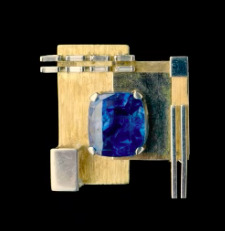
“Brooches" by Ernest Blyth in gold, sapphire or emeralds, and diamonds (1971) presented in “A History of Jewellery: Bedazzled (part 8: Jewellery from 1950s, 60s and 70s)” by Beatriz Chadour-Sampson - International Jewellery Historian and Author - for the V&A Academy online, april 2024.
#conferences#inspirations bijoux#diamant#saphir#emeraude#Blyth#ChadourSampson#V&AAcademy#Victoria&AlbertMuseum
0 notes
Photo

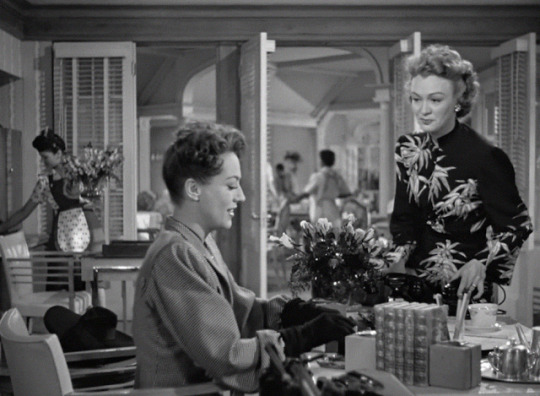



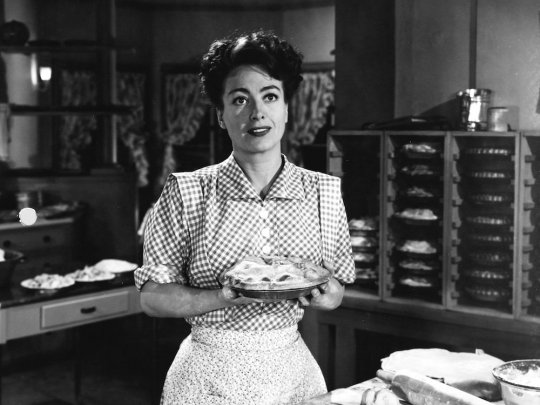


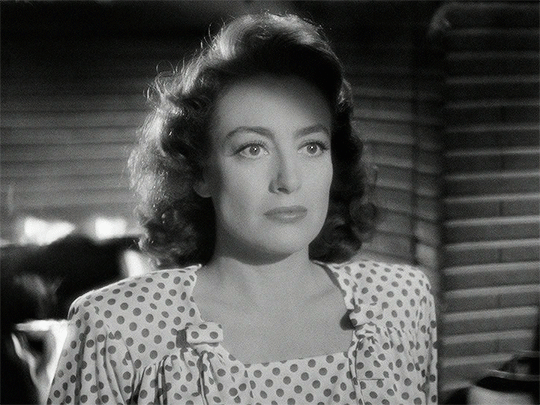

Mildred Pierce (Michael Curtiz, 1945)
Cast: Joan Crawford, Jack Carson, Ann Blyth, Zachary Scott, Eve Arden, Bruce Bennett, Butterfly McQueen, Lee Patrick, Moroni Olsen, Jo Ann Olsen. Screenplay: Ranald McDougal, based on a novel by James M. Cain. Cinematography: Ernest Haller. Art direction: Anton Grot. Film editing: David Weisbart. Music: Max Steiner.
Mildred Pierce provided Joan Crawford with her shining Oscar moment, even if she had to accept her statuette from her sickbed -- surrounded, to be sure, by press photographers. But I don't think it's her best performance. I prefer her as Crystal Allen in The Women (George Cukor, 1939), who, though she loses her sugar daddy still manages to kiss off the "respectable" women with a splendid curtain line. Or as Helen Wright, the consummate rich and predatory patroness in Humoresque (Jean Negulesco, 1946), treating the Fannie Hurst melodrama as if it were Ibsen, inhabiting every absurd moment with full conviction. Or even as Millicent Weatherby in Autumn Leaves (Robert Aldrich, 1956), in which she fights against the hardness into which her face was beginning to settle as she turned 50 by crafting an image of a younger, more vulnerable woman. There are things about Mildred Pierce that don't quite work, particularly the shifts from film noir, shot with expressionist flair by Ernest Haller, to "woman's picture" opulence of setting. But it is still an indispensable film, as essential to defining Crawford's career -- and hence to an understanding of how Hollywood viewed women in the 1940s -- as Now, Voyager (Irving Rapper, 1942) was to Bette Davis's.
gifs from itsrinanoir
3 notes
·
View notes
Text
because I have nothing better to do with my time (besides, you know, law school final exams, three part-time jobs, cleaning my kitchen, etc) I am attempting to compile a list of all the books, poems, plays, ballads, etc, mentioned or quoted or referenced by everyone’s favourite obnoxious aristocrat Lord Peter Wimsey. Are you reading or rereading some Dorothy L. Sayers? Would you like to aid me in this pointless noble endeavour? Please help expand this list!
(books quoted in chapter headings count; books referenced in short stories count; anything by Jill Patton Walsh does not count)
so far I have:
Whose Body?
The Divine Comedy - Dante Alighieri
The Golden Legend - Jacobus de Varagine
Bleak House - Charles Dickens
The Ingoldsby Legends - Richard Barham
The Gondoliers - W. S. Gilbert
“A Child’s Hymn of Praise” - Jane Taylor
Pilgrim’s Progress
Book of Nonsense - Edward Lear
Uncle Remus - Joel Chander Harris (:/)
“The Sign of Four” - Sir Arthur Conan Doyle
Just So Stories - Rudyard Kipling (:/ again)
Dombey and Son - Charles Dickens
The Decameron - Boccaccio
“Kubla Khan” - Samuel Taylor Coleridge
The Adventures of Sexton Blake - Harry Blyth
Meno - Plato
Raffles: The Amateur Cracksman - E. W. Hornung
Clouds of Witnesses
Othello - William Shakespeare
“Lucy Gray” - William Wordsworth
David Copperfield - Charles Dickens
The Merchant of Venice - William Shakespeare
The Lay of the Last Minstrel - Sir Walter Scott
Northanger Abbey - Jane Austen
Hamlet - William Shakespeare
Atalanta in Calydon - Charles Swinburne
HMS Pinafore - W. S. Gilbert
My Two Countries - Lady Astor
Alice’s Adventures - Wonderland by Lewis Carroll
The Wallet of Kai-Lung - Ernest Bramah
“A Lecture Upon the Shadow” - John Donne
Biography for Beginners - E. C. Bentley
The Wonderful and Surprising History of Jack the Giant-Killer - Anonymous
Richard II - William Shakespeare
Child Ballad 65, “Lady Maisry,” - Anonymous
Manon Lescaut - Antoine François Prévost
119 notes
·
View notes
Photo

Ernest Egbert Blyth, Last Mayor & First Lord Mayor of Norwich, 1911, William Orpen
https://www.wikiart.org/en/william-orpen/ernest-egbert-blyth-last-mayor-first-lord-mayor-of-norwich-1911
14 notes
·
View notes
Text
Mairéad Ní Ghráda and An Triail
by Deirdre Swain
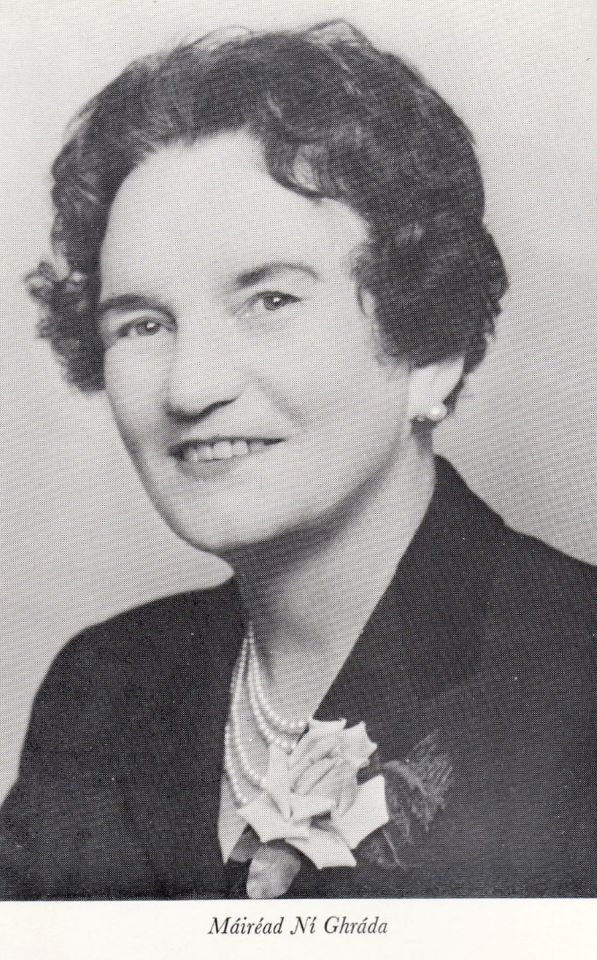
2021 marks the 50th anniversary of the death of Mairéad Ní Ghráda, playwright, broadcaster, teacher and Irish language advocate. She is best known for her Irish-language play, An Triail. Mairéad was born in Knockadangan, Kilmaley in Co. Clare on 23 December 1896. She was surrounded by Irish growing up. Her father, a farmer, was a native speaker of Irish, and her love of Irish and her life-long commitment to the revival of the language stemmed from his influence. He was immersed in the oral tradition, and he would often recite the poem, The Midnight Court by Brian Merriman. Mairéad was in despair about the state of the Irish language. She once said that she was happy that she was not in the generation that would lose the Irish language forever.
Her parents wanted her to terminate her education at the end of primary school so that she could work on the farm. This did not happen; instead, she went to secondary school in Ennis. She won several prizes as a student, and she was also awarded a County Council scholarship to University College Dublin (UCD), where she did a BA in Irish, French and English and an MA in Irish. While there, she was in Cumann na mBan and Conradh na Gaeilge. She was once put in prison for selling republican flags on Grafton Street, and she used to joke about this fifty years later. She worked as a teacher and then as private secretary to Ernest Blythe, who was a Cumann na nGael TD in the first Dáil of the new Irish Free State, and she continued to work for him during the Civil War when he was Minister for Finance. She married Richard Kissane, a senior Garda, in 1923, and they had two sons, Séamas and Brian. In 1926, Ireland’s first radio station, 2RN, which later became Radio Éireann, went on air. Ní Ghráda was employed as women’s organiser, compiling programmes for women and children. She became the station’s principal announcer in 1929. She was the first female radio announcer in Ireland, Britain and possibly in Europe, working as a broadcaster for nine years.
Ní Ghráda collaborated with Pádraig Ó Siochrú (better known as An Seabhac) at the Educational Council of Ireland school book section. She wrote many educational texts, including Progress in Irish. She became editor for the school textbooks publisher Brown and Nolan. She reviewed De Bhaldraithe’s Irish dictionary for the benefit of teachers. Such was her dedication that she continued to record work for school books when she was sick in hospital.
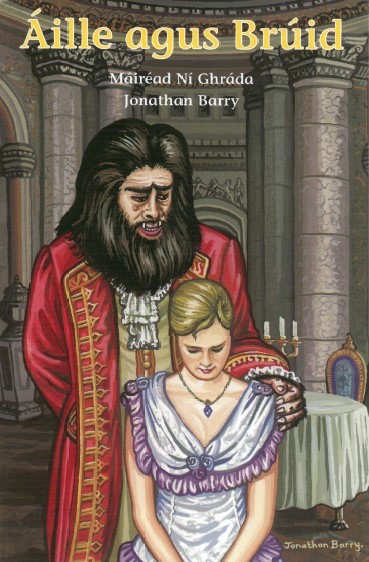
She took a great interest in children’s educational needs and had a great understanding of the minds of young people, as is evident from her plays. She wrote school drama texts based on mythology, the Bible, Aesop’s fables and the stories of the Fianna. She translated Peter Pan into Irish (Tír na Deo). She also wrote beautiful Irish versions of Ladybird fairytale stories including Goldilocks and the Three Bears (Na trí Bhéar), Sleeping Beauty (Codladh Céad Bliain), Cinderella (Luaithríona), Beauty and the Beast (Áille agus Brúid), Rapunzel (Rápúnzell) and Jack and the Beanstalk (Seán agus an Gas Pónaire), thereby promoting literacy in the Irish language.
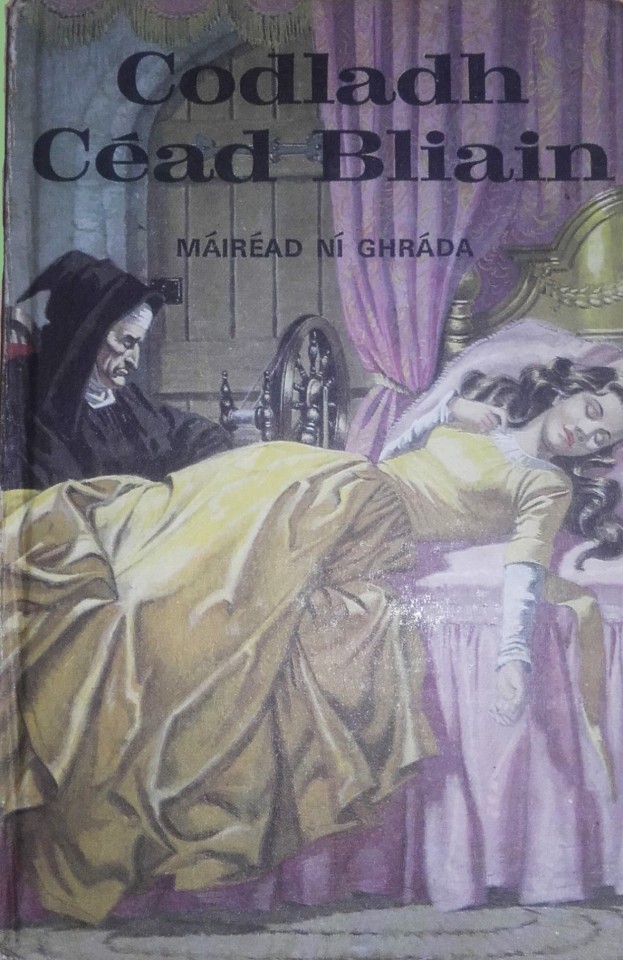
Ní Ghráda’s great passion was theatre. Irish language theatre was in decline when she started producing plays, but she transformed this; her work generated an interest from people who did not even speak much Irish. She was bringing the language to people in an enjoyable way through the theatre. Her enormous contribution to Irish language theatre includes eleven original plays, which is more than that of any other playwright in Irish. Her play, Mícheál, based on Tolstoy’s story, Michael, won an Abbey Theatre award in 1933. She wrote her first original play Uacht for her students while working as a teacher in Kilmacud Cookery College. She never intended for this to be performed in a theatre, but when Mícheál MacLiammóir discovered it, he decided to produce it in the Gate Theatre.
Ní Ghráda wrote powerful plays that spoke the truth about Irish society at the time, discussing modern problems through the medium of Irish. She was very skilled at giving women, particularly young women, main character roles, something which very few playwrights did, apart from Seán O’Casey. Her plays made many people uncomfortable, because they discussed taboo subjects and contained themes that people were afraid to face, such as corrupt politicians and the cruel treatment of unmarried mothers in Ireland. She was completely ahead of her time in this regard.
Ní Ghráda’s best-known play is An Triail. It ranks with Brendan Behan’s An Giall as one of the most successful plays in the Irish language. This play is very relevant in the year that the Final Report of the Commission of Investigation into Mother and Baby Homes was published and at a time when the injustices against and rights of adopted people and their natural mothers are being discussed. It is thought to have been based on an incident which happened during Ní Ghráda’s childhood, when a girl who became pregnant was victimised while the father of her child escaped condemnation. Ní Ghráda rewrote part of An Triail, including the ending, under the guidance of Tomás MacAnna, the play’s director.
An Triail chronicles the treatment of a young girl, Máire, who has an affair with a married man, resulting in pregnancy. She is rejected by her mother and her two brothers. Her mother cares more about what the neighbours will think than she does for the welfare of her daughter and grandchild-to-be. Máire is rejected by society at large, and the only two characters who are sympathetic towards her are Mailí, who offers her and her baby refuge, and one of the lawyers at her trial. Everyone else judges and condemns her, and the father of the baby does not even want to meet his newborn daughter. In the end, she kills herself and her baby, whom it is clear she loves dearly. Máire claims that she killed her child because she was a girl; that by releasing her from life, she had freed her from the misery of being a female. The play revolves around this theme; Máire is heard voicing it at the very start of the play and again at the end. The question posed throughout is, “Why do things like this happen in Ireland?” Tomás MacAnna, the play’s director, praised An Triail as the precursor of women’s liberation. In a way, Ní Ghráda was putting Ireland on trial. Harold Hobson from the London Times newspaper gave it a very positive review, even though he did not speak Irish.
An Triail premiered at the Damer Theatre during the 1964 Dublin Theatre Festival. Shortly after this, Ní Ghráda translated it into English, and in 1965, the English version, On Trial, was performed in the Eblana Theatre. An Triail was adapted for TV, and it was entered in the 1965 Berlin TV festival. It was very rare for Irish-language plays to be made into TV programmes. The English version was published in 1966.
The play received favourable reviews, but it was very controversial when it was first performed. The idea that everyone was guilty of what happened to Máire and her baby because of a lack of Christianity and compassion upset people. Many were shocked by what they saw as an “immoral” play. The first performance of An Triail took place on 22 September 1964, just three days after the final instalment of Michael Viney’s series of articles in the Irish Times, collectively titled “No birthright”. This series was a critical investigation of the treatment of unmarried mothers in Ireland. In one article, Viney quotes an Irish mother who said “Tell my daughter never to set foot in Ireland again and that she has disgraced her family and her country”. In a second article, he mentions another unmarried girl who says that, on telling her mother that she’s pregnant, “it didn’t take long, I’m afraid, to think of what the neighbours would say”. Although it is difficult to imagine in today’s society, these quotes demonstrate that An Triail accurately reflected the prejudiced and cruel attitudes towards unmarried mothers at that time, and people’s preoccupation with neighbours’ opinions.
Mairéad Ní Ghráda spent the last two years of her life in hospital. She died on 13 June 1971.
The Reference Library holds a copy of the English-language version of the play, On Trial. It also houses a book about Mairéad Ní Ghráda and other Irish-language playwrights entitled An underground theatre: major playwrights in the Irish language, 1930-80 by Philip O’Leary. These can be viewed once the Reference Library re-opens.
References
Books
-Breathnach, D. and Ní Mhurchú, M. (1986). 1882-1982: Beathaisnéis a haon. Baile Átha Cliath: An Clóchomhar Tta.
-Ní, Ghráda, M. (c1978). An Triail/Breithiúnas: Dhá Dhráma. Baile Átha Cliath: Oifig an tSoláthair.
-Ní Mhurchú, M. and Breathnach, D. (1999). 1782-1881: Beathaisnéis [Maille le Forlíonadh le 1882-1982 Beathaisnéis agus le hInnéacs (1782-1999)]. Baile Átha Cliath: An Clóchomhar Tta.
-Titley, A. (2010). Scríbhneoirí faoi chaibidil. Baile Átha Cliath: Cois Life Teoranta.
Website articles
-Clare County Library (2021). Mairéad Ní Ghráda (1896-1971). 5 March. Available at: https://www.clarelibrary.ie/eolas/coclare/people/nighrada.htm (Accessed: 5 March 2021).
-Irish Theatre Institute (2021). Ócáid Chomórtha: A Celebration of Máiréad Ní Ghráda: Mairéad Ní Ghráda – Biography. 5 March. Available at: https://www.irishtheatreinstitute.ie/event.aspx?t=mir%C3%A9ad_n%C3%AD_ghrda&contentid=9289&subpagecontentid=9297 (Accessed: 5 March 2021).
-Irish Theatre Institute (2021). Ócáid Chomórtha: A Celebration of Máiréad Ní Ghráda: Production History. 5 March. Available at: https://www.irishtheatreinstitute.ie/event.aspx?t=an_triail_|_on_trial___production_history&contentid=9289&subpagecontentid=9302 (Accessed: 5 March 2021).
-Irish Theatre Institute (2021). Ócáid Chomórtha: A Celebration of Máiréad Ní Ghráda: Social Context. 5 March. Available at: https://www.irishtheatreinstitute.ie/event.aspx?t=social_context&contentid=9289&subpagecontentid=9303 (Accessed: 5 March 2021).
26 notes
·
View notes